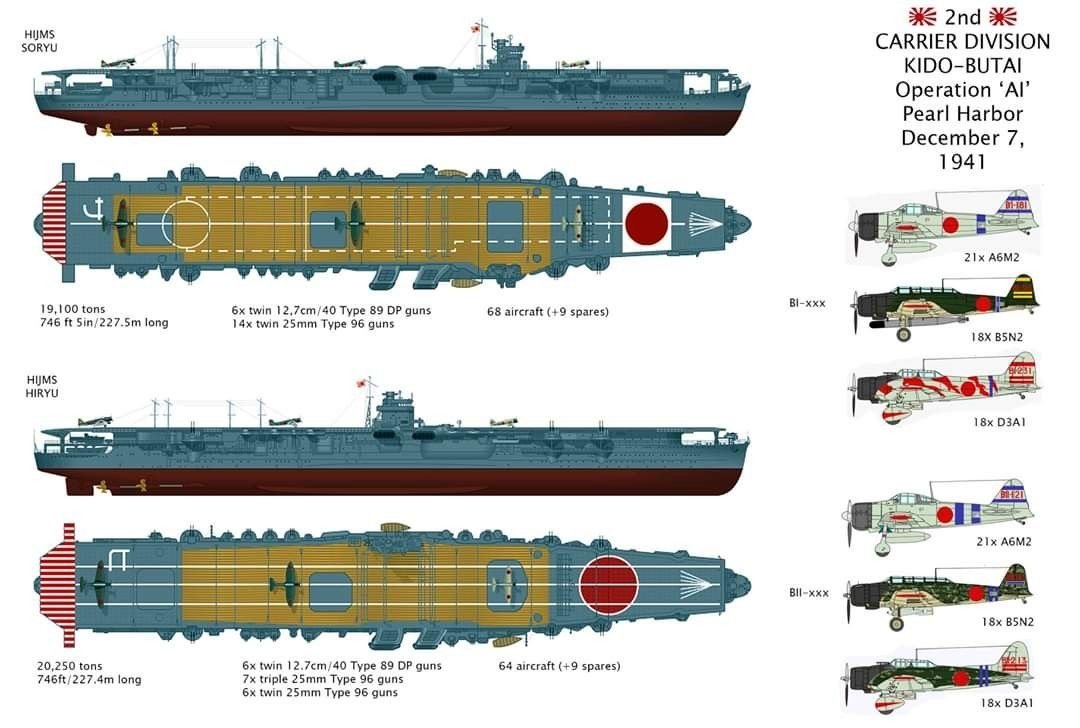The Japanese carrier strike force, Kido Butai, continues its journey east toward Hawaii. Other Japanese forces board transports and head south from China heading for Malaya. Seven more troop transport ships leave Saigon in French Indochina and rendezvous with the troop transports coming down from China, swelling the invasion force with seasoned soldiers of the 56th Division. Japanese destroyer Uranami comes across an unsuspecting Norwegian freighter, 1515-ton MV Halldor, about five miles off Saigon and the Japanese board it, smashing its radio. The Norwegians then are released to proceed willingly to Hong Kong, where the Japanese later seize the ship.
Conducting a war across the vast stretches of the Pacific Ocean requires constant reconnaissance, and the most efficient way to achieve that is with floatplanes and flying boats that can land at isolated spots, refuel, and continue their patrols. Today, the Imperial Japanese Air Force makes the first flight of the Kawanishi E15K Shiun was a single-engined Japanese reconnaissance floatplane. The Allies will give this the reporting name "Norm," named in honor of Squadron Leader Norman O. Clappison of the RAAF, a member of the Allied Technical Air Intelligence Unit (ATAIU) who first spots it.
Read more: https://worldwartwodaily.filminspector.com/.../december-5...
Britain declared war on Finland, Hungary and Romania.
Japan responded to Roosevelt's inquiry of December 2 by saying that foreign reports of the number of Japanese troops in French Indochina were exaggerated and the troop concentrations were in full accord with the agreement between Tokyo and Vichy.
War Secretary Henry L. Stimson said during a press conference that those responsible for the previous day's leaking of American war plans were "wanting in loyalty and patriotism." Stimson also offered a statement asking, "What would you think of an American general staff which in the present condition of the world did not investigate and study every conceivable type of emergency which may confront this country and every possible method of meeting that emergency?"
The White House made no other comment on the matter and it would quickly be forgotten about after the events of December 7.
German submarine U-175 was commissioned.
The Soviet Red Army launched a massive counter-offensive against the German Forces during the Battle of Moscow which effectively put Operation Typhoon to an end.
From Brittanica:
General Tōjō Hideki, who succeeded Konoe as premier in mid-October 1941, continued the already desperate talks. The United States, however, persisted in making demands that Japan could not concede: renunciation of the Tripartite Pact (which would have left Japan diplomatically isolated); the withdrawal of Japanese troops from China and from Southeast Asia (a humiliating retreat from an overt commitment of four years’ standing); and an open-door regime for trade in China. When Cordell Hull, the U.S. secretary of state, on November 26, 1941, sent an abrupt note to the Japanese bluntly requiring them to evacuate China and Indochina and to recognize no Chinese regime other than that of Chiang Kai-shek, the Japanese could see no point in continuing the talks. (See Sidebar: Pearl Harbor and the “Back Door to War” Theory.)
Since peace with the United States seemed impossible, Japan set in motion its plans for war, which would now necessarily be waged not only against the United States but also against Great Britain (the existing war effort of which depended on U.S. support and the Far Eastern colonies of which lay within the orbit of the projected Japanese expansion) and against the Dutch East Indies (the oil of which was essential to Japanese enterprises, even apart from geopolitical considerations).
The evolving Japanese military strategy was based on the peculiar geography of the Pacific Ocean and on the relative weakness and unpreparedness of the Allied military presence in that ocean. The western half of the Pacific is dotted with many islands, large and small, while the eastern half of the ocean is, with the exception of the Hawaiian Islands, almost devoid of landmasses (and hence of usable bases). The British, French, American, and Dutch military forces in the entire Pacific region west of Hawaii amounted to only about 350,000 troops, most of them lacking combat experience and being of disparate nationalities. Allied air power in the Pacific was weak and consisted mostly of obsolete planes. If the Japanese, with their large, well-equipped armies that had been battle-hardened in China, could quickly launch coordinated attacks from their existing bases on certain Japanese-mandated Pacific islands, on Formosa (Taiwan), and from Japan itself, they could overwhelm the Allied forces, overrun the entire western Pacific Ocean as well as Southeast Asia, and then develop those areas’ resources to their own military-industrial advantage. If successful in their campaigns, the Japanese planned to establish a strongly fortified defensive perimeter extending from Burma in the west to the southern rim of the Dutch East Indies and northern New Guinea in the south and sweeping around to the Gilbert and Marshall islands in the southeast and east. The Japanese believed that any American and British counteroffensives against this perimeter could be repelled, after which those nations would eventually seek a negotiated peace that would allow Japan to keep her newly won empire.

